Mohamed Y. Selim
Revolutionizing Undergraduate Learning: CourseGPT and Its Generative AI Advancements
Jul 25, 2024



Abstract:Integrating Generative AI (GenAI) into educational contexts presents a transformative potential for enhancing learning experiences. This paper introduces CourseGPT, a generative AI tool designed to support instructors and enhance the educational experiences of undergraduate students. Built on open-source Large Language Models (LLMs) from Mistral AI, CourseGPT offers continuous instructor support and regular updates to course materials, enriching the learning environment. By utilizing course-specific content, such as slide decks and supplementary readings and references, CourseGPT provides precise, dynamically generated responses to student inquiries. Unlike generic AI models, CourseGPT allows instructors to manage and control the responses, thus extending the course scope without overwhelming details. The paper demonstrates the application of CourseGPT using the CPR E 431 - Basics of Information System Security course as a pilot. This course, with its large enrollments and diverse curriculum, serves as an ideal testbed for CourseGPT. The tool aims to enhance the learning experience, accelerate feedback processes, and streamline administrative tasks. The study evaluates CourseGPT's impact on student outcomes, focusing on correctness scores, context recall, and faithfulness of responses. Results indicate that the Mixtral-8x7b model, with a higher parameter count, outperforms smaller models, achieving an 88.0% correctness score and a 66.6% faithfulness score. Additionally, feedback from former students and teaching assistants on CourseGPT's accuracy, helpfulness, and overall performance was collected. The outcomes revealed that a significant majority found CourseGPT to be highly accurate and beneficial in addressing their queries, with many praising its ability to provide timely and relevant information.
Blockage Prediction for Mobile UE in RIS-assisted Wireless Networks: A Deep Learning Approach
Sep 22, 2022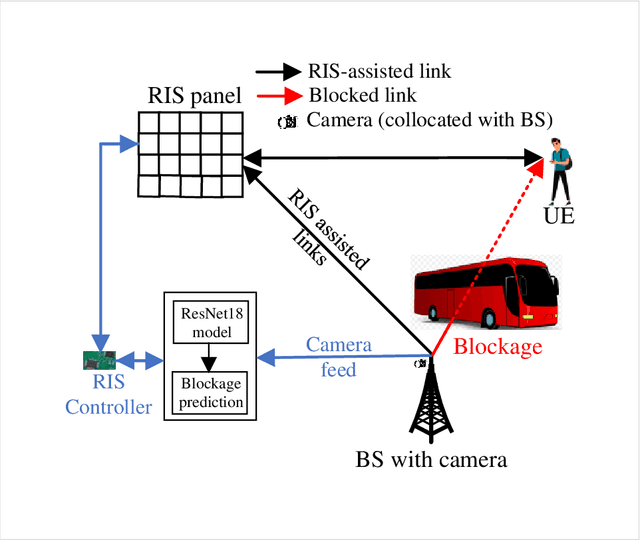
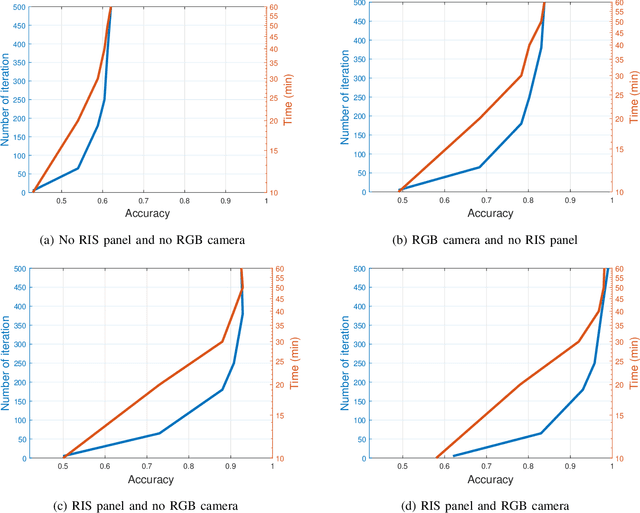
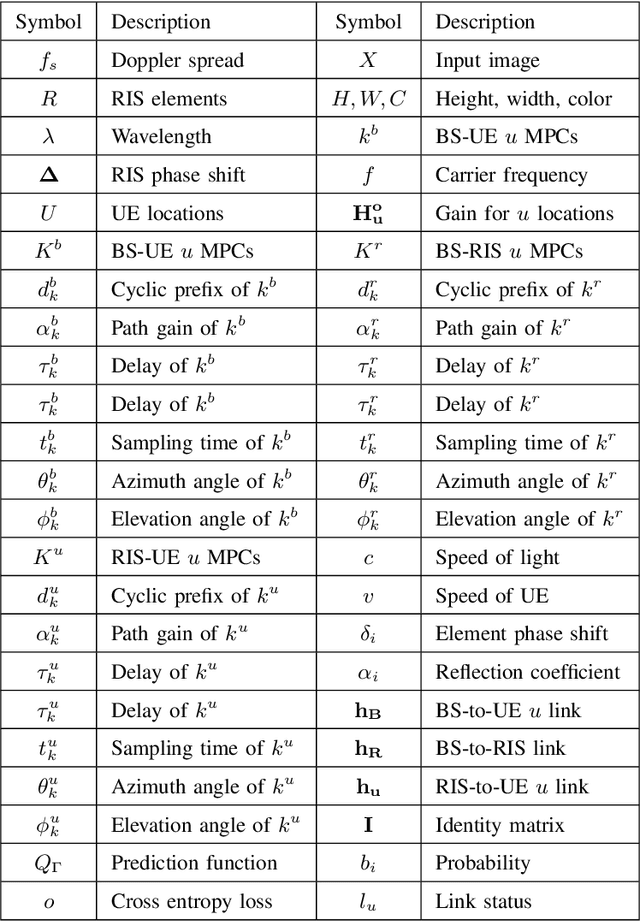
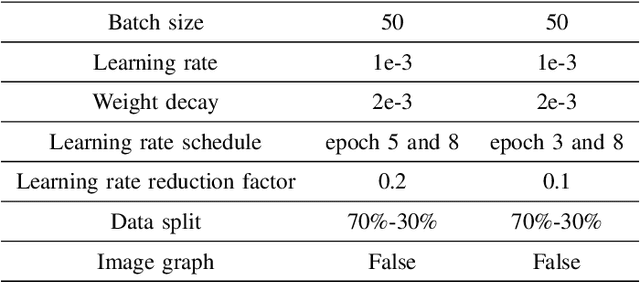
Abstract:Due to significant blockage conditions in wireless networks, transmitted signals may considerably degrade before reaching the receiver. The reliability of the transmitted signals, therefore, may be critically problematic due to blockages between the communicating nodes. Thanks to the ability of Reconfigurable Intelligent Surfaces (RISs) to reflect the incident signals with different reflection angles, this may counter the blockage effect by optimally reflecting the transmit signals to receiving nodes, hence, improving the wireless network's performance. With this motivation, this paper formulates a RIS-aided wireless communication problem from a base station (BS) to a mobile user equipment (UE). The BS is equipped with an RGB camera. We use the RGB camera at the BS and the RIS panel to improve the system's performance while considering signal propagating through multiple paths and the Doppler spread for the mobile UE. First, the RGB camera is used to detect the presence of the UE with no blockage. When unsuccessful, the RIS-assisted gain takes over and is then used to detect if the UE is either "present but blocked" or "absent". The problem is determined as a ternary classification problem with the goal of maximizing the probability of UE communication blockage detection. We find the optimal solution for the probability of predicting the blockage status for a given RGB image and RIS-assisted data rate using a deep neural learning model. We employ the residual network 18-layer neural network model to find this optimal probability of blockage prediction. Extensive simulation results reveal that our proposed RIS panel-assisted model enhances the accuracy of maximization of the blockage prediction probability problem by over 38\% compared to the baseline scheme.
CURE: Enabling RF Energy Harvesting using Cell-Free Massive MIMO UAVs Assisted by RIS
Jul 22, 2021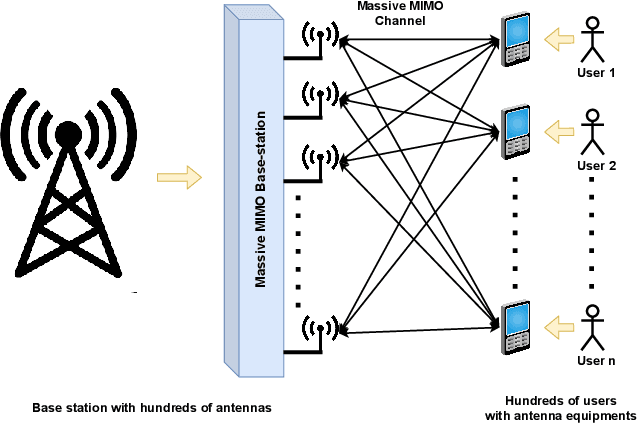

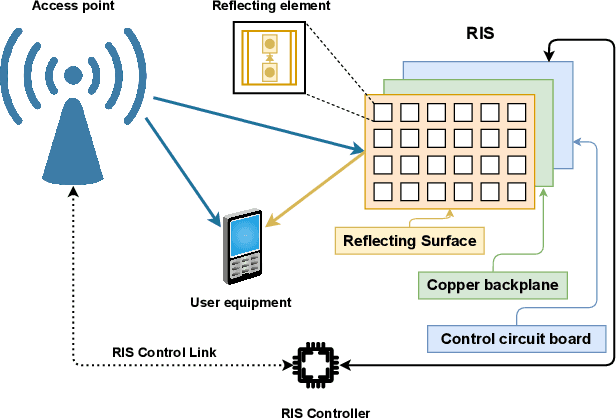
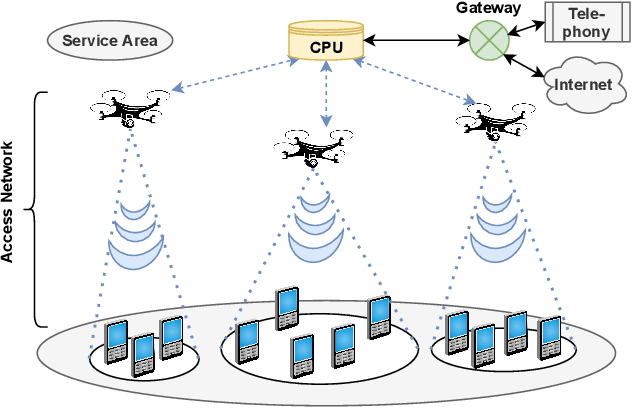
Abstract:The ever-evolving internet of things (IoT) has led to the growth of numerous wireless sensors, communicating through the internet infrastructure. When designing a network using these sensors, one critical aspect is the longevity and self-sustainability of these devices. For extending the lifetime of these sensors, radio frequency energy harvesting (RFEH) technology has proved to be promising. In this paper, we propose CURE, a novel framework for RFEH that effectively combines the benefits of cell-free massive MIMO (CFmMIMO), unmanned aerial vehicles (UAVs), and reconfigurable intelligent surfaces (RISs) to provide seamless energy harvesting to IoT devices. We consider UAV as an access point (AP) in the CFmMIMO framework. To enhance the signal strength of the RFEH and information transfer, we leverage RISs owing to their passive reflection capability. Based on an extensive simulation, we validate our framework's performance by comparing the max-min fairness (MMF) algorithm for the amount of harvested energy.
 Add to Chrome
Add to Chrome Add to Firefox
Add to Firefox Add to Edge
Add to Edge